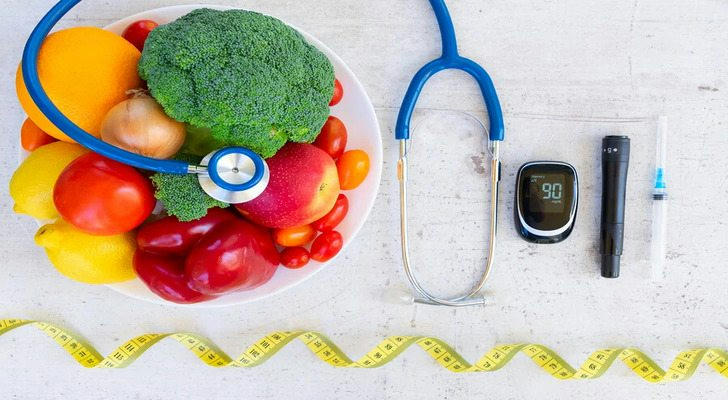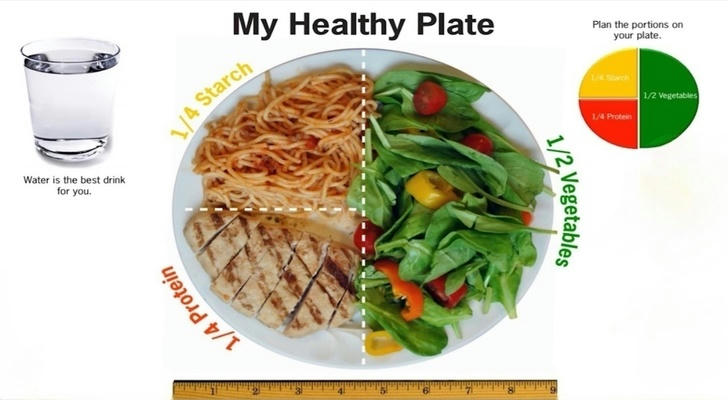Smart Eating Strategies for Diabetes Management: Flavorful and Nutritious Meal Solutions

Living with diabetes requires smart food choices that balance taste and nutrition. A well-planned diet helps stabilize blood sugar, prevent complications, and boost energy. This guide shares scientifically-proven meal ideas that are both delicious and diabetes-friendly, making healthy eating enjoyable while supporting your health goals.
The Critical Connection Between Diet and Diabetes Control
• Significant HbA1c reduction: Studies show improvements of 1-2 percentage points when following balanced meal plans (American Diabetes Association, 2024)
• Cardiovascular protection: Risk reduction for heart disease by 20-30% through targeted dietary changes (National Institutes of Health, 2023)
• Enhanced daily energy: Preventing the rollercoaster of sugar highs and crashes that often accompany poorly managed diabetes
Understanding these profound connections naturally leads to the question: What specific dietary approaches deliver these benefits most effectively?
Three Fundamental Principles for Diabetes Nutrition
1. Prioritize Low Glycemic Carbohydrate Sources
Not all carbohydrates affect blood sugar equally. High-glycemic options like white bread, pastries, and sugary cereals cause rapid glucose spikes, while their low-glycemic counterparts provide steady, sustained energy. Optimal choices include:
• Nutrient-dense whole grains: Options like brown rice, quinoa, steel-cut oats, and whole wheat pasta offer complex carbohydrates that digest gradually
• Fiber-packed vegetables: Broccoli, spinach, zucchini, and other non-starchy vegetables provide essential nutrients with minimal blood sugar impact
• Protein-rich legumes: Lentils, chickpeas, black beans, and other pulses deliver plant-based protein along with beneficial fiber
A 2023 study in Diabetes Care found that simply replacing white bread with whole-grain varieties could reduce post-meal blood sugar spikes by 30%, demonstrating the power of smart carb selection.
2. Create Balanced Meals with Protein and Healthy Fats
The magic of blood sugar stabilization happens when carbohydrates are properly paired with other macronutrients. High-quality proteins and beneficial fats slow digestion, preventing sudden glucose surges. Some particularly effective combinations include:
• Omega-3 rich fish: like salmon paired with quinoa and roasted vegetables creates a nutritionally complete meal
• Protein-packed Greek yogurt: combined with antioxidant-rich berries and crunchy nuts makes for a satisfying snack or breakfast
• Eggs with avocado: on whole-grain toast provides a perfect balance of protein, healthy fats, and complex carbs
The Journal of Nutrition (2021) reports that meals containing 20-30 grams of protein significantly improve postprandial glucose control compared to lower-protein alternatives.
3. Eliminate Hidden Sugar Sources
Many seemingly harmless foods and beverages can wreak havoc on blood sugar levels. A single 12-ounce soda, for example, contains about 39 grams of sugar and can elevate blood glucose by 50 mg/dL or more within 60 minutes (Centers for Disease Control, 2023). Healthier hydration alternatives include:
• Naturally flavored waters: infused with citrus, cucumber, or fresh herbs
• Unsweetened teas and coffees: which provide antioxidants without added sugars
• Nutrient-dense snacks: like mixed nuts or cheese cubes that satisfy cravings without spiking glucose

A Week of Diabetes-Friendly Meals (Simple and Satisfying)
Day 1: Nutrient-Packed Choices
• Morning Meal: Fluffy scrambled eggs with sautéed spinach served on whole-grain toast
• Midday Meal: Grilled chicken breast over a salad with avocado, cherry tomatoes, and olive oil dressing
• Evening Meal: Oven-baked salmon fillet with quinoa and steamed broccoli florets
Day 2: Plant-Powered Options
• Morning Meal: Creamy Greek yogurt topped with almonds and fresh blueberries
• Midday Meal: Sliced turkey with hummus wrapped in a whole-wheat tortilla with crisp vegetables
• Evening Meal: Tofu stir-fry with brown rice and an assortment of colorful vegetables
The complete seven-day plan continues this pattern of alternating protein sources, incorporating diverse vegetables, and utilizing different whole grains to ensure nutritional variety.
Frequent Dietary Pitfalls to Avoid
• Irregular eating patterns: Skipping meals often leads to excessive hunger and subsequent overeating, causing dangerous blood sugar fluctuations
• Overconsumption of natural sugars: While fruits and honey are healthier than refined sugar, they still require portion control
• Portion size neglect: Even nutrient-dense foods can impact glucose levels when consumed in excessive quantities
Research published in the Diabetes Journal (2024) found that individuals who consistently monitored their food intake achieved 12% better blood sugar management compared to those who didn't track their eating patterns.
Conclusion: Sustainable Changes for Lasting Results
Effective diabetes nutrition isn't about deprivation or rigid dieting - it's about making strategic, flavorful substitutions that become lifelong habits.
By focusing on low-glycemic carbohydrates, lean proteins, and beneficial fats, individuals can maintain stable glucose levels, enjoy sustained energy, and protect their long-term health.
Experiment with replacing traditional white rice with cauliflower rice - this single swap can reduce carbohydrate content by 75% while adding valuable nutrients and maintaining satisfying textures in your meals.
Small changes like this, implemented consistently, can yield significant health improvements over time.
